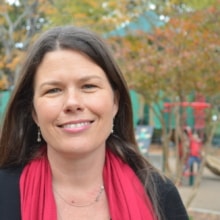Crisis is not my favorite word. It is used too often to grab attention at the expense of the thoughtful policy solutions our students, schools, and state deserve. It also ignores that most policy issues play out differently in different classrooms across our state.
On the other hand, if you are standing in a classroom on the first day of school, and there is no teacher, I get that it feels like a crisis.
This article is the first in a series this week about North Carolina’s teacher pipeline.
When we talk about the pipeline, we are talking about the cycle of recruiting prospective teachers to preparing teachers for the classroom to supporting beginning teachers to developing and retaining teachers to leveraging master teachers.
One thing is for sure: this issue is not new. The N.C. Center for Public Policy Research has been studying our supply of teachers for almost all of its 40 years.
I grew up wanting to be a teacher. We played school in front of my house with children on different steps in different grades. In her podcast, Johanna Anderson with the Belk Foundation talks about a study where more than half of the 9th graders want to become educators. An early college for future teachers just opened on the campus of UNC Charlotte. The UNC System saw a 16 percent increase in those seeking an education degree last year. I am not surprised.
Mary Ann Danowitz, dean of the College of Education at North Carolina State University, said to WUNC, “We think it’s a turn that in some degree we can attribute to the fact that our elected public officials [in Raleigh] are talking about the importance of education.” What do you think?
Most of us hold dear to our hearts our favorite teacher. For me, it was Mrs. Fincannon. For my youngest son, it was Miss White. Miss White showed up at my Dad’s funeral recently. Teachers matter, folks. In and out of the classroom.
We hope our collection of stories, research, reporting, podcasts, and perspectives will prompt a new look and a more nuanced conversation about the teacher pipeline across our state, beginning the process of identifying districts with healthy, adequate, and inadequate teacher supply.
We hope best practices will bubble up, informing our understanding of where teachers come from, and where they are likely to come from, in different communities of our state moving forward.
Because there is one other thing that is for sure: a labor pool filled with well-qualified teachers thoroughly prepared for the demands of today’s and tomorrow’s classroom, and retention and placement efforts strong enough that teachers stay on the job, is just as important now as it was the last time the Center made that recommendation.
As with all of our work this year, we are thinking not just about now but also about our future. How will the number of teachers needed shift with demographic trends and technological innovations? What skillset will future teachers possess? What does the profession need to look like to attract and retain the best and brightest? What other questions should we be asking?
I had a reaction when I first read this series. I hope you do too. Please weigh in.
North Carolina Insight Education Vol. 25 No. 1


